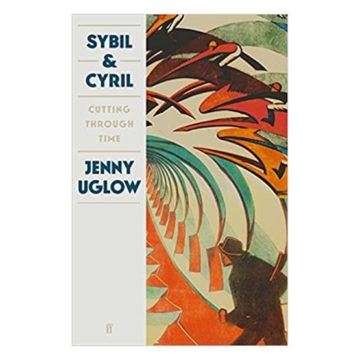Norma Clarke at Literary Review:
 Few historians write better about pictures than Uglow, and her commentaries make you look and look again at bright colour plates that deliver little shocks. Physically, linocuts are not large: the whirligig of Cyril’s The Merry-go-round and the glorious swirl of ’Appy ’Ampstead burst from confined spaces; The Eight and Bringing in the Boat are not much bigger than a sheet of A4. The technical ability required to succeed in this medium is immense. The same could be said for piecing together the lives of individuals who covered their tracks and told themselves stories that were only partially true. Enough scraps survive to suggest that Cyril loved Sybil and was sad to lose her (he went back to his ‘quiet’ and kindly, amenable wife, and nothing was said in the family about his twenty-year absence). Sybil, who settled happily on Vancouver Island and whose reputation grew as she continued to work, was always busy, if not sketching and painting and linocutting then teaching, making her own clothes and boiling prodigious quantities of jam. To her brisk denial that her domestic relationship with her artist-collaborator had been that of lover, Uglow responds, ‘and who can deny her the right to possess the facts of her own life?’
Few historians write better about pictures than Uglow, and her commentaries make you look and look again at bright colour plates that deliver little shocks. Physically, linocuts are not large: the whirligig of Cyril’s The Merry-go-round and the glorious swirl of ’Appy ’Ampstead burst from confined spaces; The Eight and Bringing in the Boat are not much bigger than a sheet of A4. The technical ability required to succeed in this medium is immense. The same could be said for piecing together the lives of individuals who covered their tracks and told themselves stories that were only partially true. Enough scraps survive to suggest that Cyril loved Sybil and was sad to lose her (he went back to his ‘quiet’ and kindly, amenable wife, and nothing was said in the family about his twenty-year absence). Sybil, who settled happily on Vancouver Island and whose reputation grew as she continued to work, was always busy, if not sketching and painting and linocutting then teaching, making her own clothes and boiling prodigious quantities of jam. To her brisk denial that her domestic relationship with her artist-collaborator had been that of lover, Uglow responds, ‘and who can deny her the right to possess the facts of her own life?’
more here.
